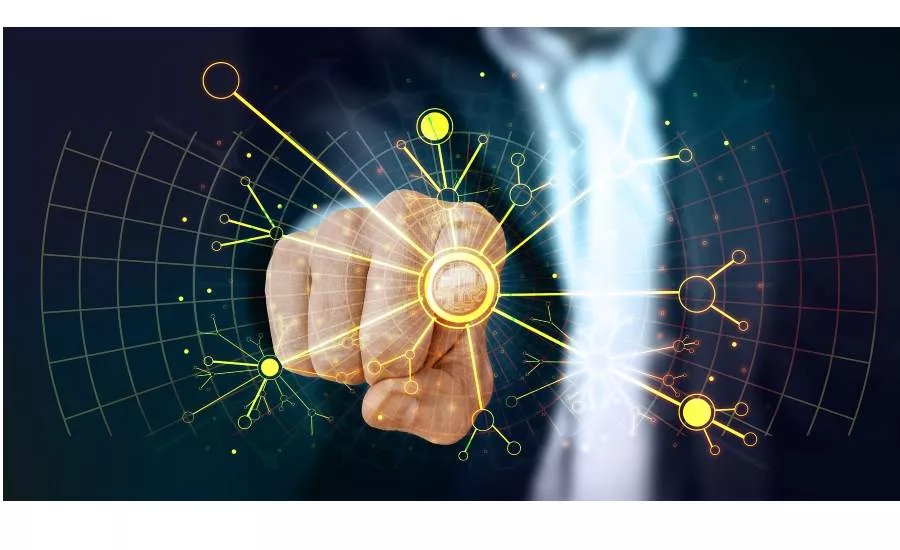A security practitioner’s roadmap to artificial intelligence

Artificial Intelligence applies algorithms to leverage deep learning and other techniques to solve actual problems. The sub-field of Vision Intelligence impacts the physical security industry directly when you consider that surveillance cameras are the ultimate end-point device, the “all-seeing eyes” of the Internet. Could “intelligence” be applied to video to create “human context” to eliminate the false alarms and tailgating pain points that have long plagued the physical security industry?
As a security leader, Philip Jang, Sr. Manager Physical Systems & Technology at VMWare, has been exploring how AI technologies and digital transformation processes impact the physical security profession for several years. Jang has global enterprise experience in the planning, execution, delivery and automation of advanced technologies such as AI, Robotics, Drones, advanced analytics and IoT. He is focused on the real physical security use cases, developing strategies for global deployment working with real estate, facilities, InfoSec, and resiliency business partners to create viable solutions that align with the core business values and objectives of the company.
One specific area he explores is the use of AI in next generation Physical Access Control Systems (PACS). The Department of Homeland Security (DHS) defines a PACS system as comprising (4) component parts:
1. Visitor Management
2. Physical Access Control
3. Intrusion Detection
4. Video Surveillance
Jang has demonstrated within his lab and with VMWare as an enterprise security practitioner, how AI and machine learning use vision intelligence to reduce unauthorized access (tailgating) by 95%. The operational efficiencies that AI has brought to video monitoring processes have been extremely impressive as well. For a look into the near future (3 years) of where AI will take the physical security industry, I sat down with Jang to discuss his operational experience and broad visibility into the technologies that will shape deployments and personnel decisions in the future.
How are commercially available” deep learning AI products impacting PACS deployments today?
The bigger question, is “Why is Physical Security lagging so far behind Cybersecurity?” It’s because our Physical Security Industry lacked the ability to fully digitize what is happening in our world. Cybersecurity on the other hand is already digitally contextualized. AI is now helping us digitalize contextual visual data and get us on par with Cybersecurity. The key thing to remembers is that false alarms are a killer for “any” security product.
Explain the process of how AI reduced tailgating at VMWare and its impact on employee behavior?
We’re using AI Deep Learning to help us correlate Video contextual data with our Physical Access Control System. The correlation of how many people come in versus how many people have been granted access is a powerful data point to prevent tailgating and unauthorized access. In the first week of deploying at our main campus, we identified over 2,000 tailgates. Over the course of the next 6 months, we shared these numbers with leadership and created a process in tandem with our rapid response guard force. Together, we implemented education and awareness training to reduce that number from 2,000 to less than 20 per week!
How did we drive the employee behavioral change at VMware? AI Deep Learning was the magic bullet for real-time detection. When combined with direct guard force intervention we managed to change the employee culture to one that eliminates tailgating and unauthorized access to our facilities. There was a lot of internal collaboration on the tailgating risk that was highlighted by the pandemic and that allowed our CSO to push for the zero-tolerance policy we put into place to address these new risks.
How is vision intelligence being deployed to improve the process of traditional video monitoring?
The full contextualization of the video data is allowing us to reduce false positive alerts coming from our traditional PACS systems today. For instance, our industry has been relying on these legacy systems to tell us door position for decades. We are plagued with a high volume of alerts like door forced open (DFO), or door held open (DHO) that provide little value but are necessary to identify a breach. The traditional model is to staff operators to investigate every alert to find the true breach event in the sea of alarms. Now with AI Deep Learning on our cameras, we could flip the script on alarm monitoring from 99% false positives to 99% actionable alerts. AI Deep Learning on our cameras and tied to our PACS system simplifies the whole equation. We capture all breach event possibilities at the access-controlled doors while dramatically reducing and nearly eliminating false positive alarms
Can you explain the R.O.I. benefits AI brings to physical security deployments?
There are many ROI benefits for the company that implements AI Deep Learning on their cameras. First, there’s an immediate reduction of alarm monitoring staff. Letting AI “sift through the noise” and raise only actionable events in real-time means that alarm loads are much lower, and you need less staff to investigate every alarm. Second, the Digitization of Information and AI Deep Learning on the camera systems provides accurate information right out of the box. Most occupancy data today just tell you how many people are in a space at a given time, but with AI on video, we can tell if someone is standing or sitting at the desk, are they interacting with a person in a collaboration space, or even if they passed out on the ground and need assistance. Today’s occupancy technology outside of AI on cameras is limited and cannot give you that level of spatial intelligence. Third, we reduce many of our high-end critical risks with AI deep learning implementations on our cameras like tailgating, unauthorized access, and the health and safety risks related to the pandemic. Last, there is a huge cybersecurity benefit with the AI Deep Learning system we implemented. With the resources powering AI deep learning, we are also able to encrypt video traffic end to end; in transit and at rest, without sacrificing usability and functionality. There are many other ROI models we can talk about with regards to PACS systems simplification in the future, but I’ll save that for later as we continue to rethink our PACs systems architecture and try other innovative approaches to the deployment of our systems.
Where do you see PACS evolving to over the next three years?
Over the next 3 years I’m predicting many security practitioners will begin relying on AI Deep-Learning Camera Systems to be the source of alerts. They will be changing the High alarm load (signal to noise ratio) with 99% false positives to the new normal of Low alarm loads and 99% actionable alerts. Leadership will demand the change and PACS integrators need to be prepared. In fact, PACS integrators need to step up to the role of being educators, leaders, and influencers. A lot of integrators come from an installation background and don’t understand security operations. Integrators must gain the “operator’s perspective” at each level of interaction with a product. What is the experience of the physical security officer, the security operations center operator, and the SOC manager when using your product? This knowledge can provide the consultative approach needed to solve today’s converged security problems. Just because you can build a ship (supply a product), doesn’t mean you know how to sail it (have the operator’s perspective). AI is changing physical security much faster than most people realize.
Looking for a reprint of this article?
From high-res PDFs to custom plaques, order your copy today!








